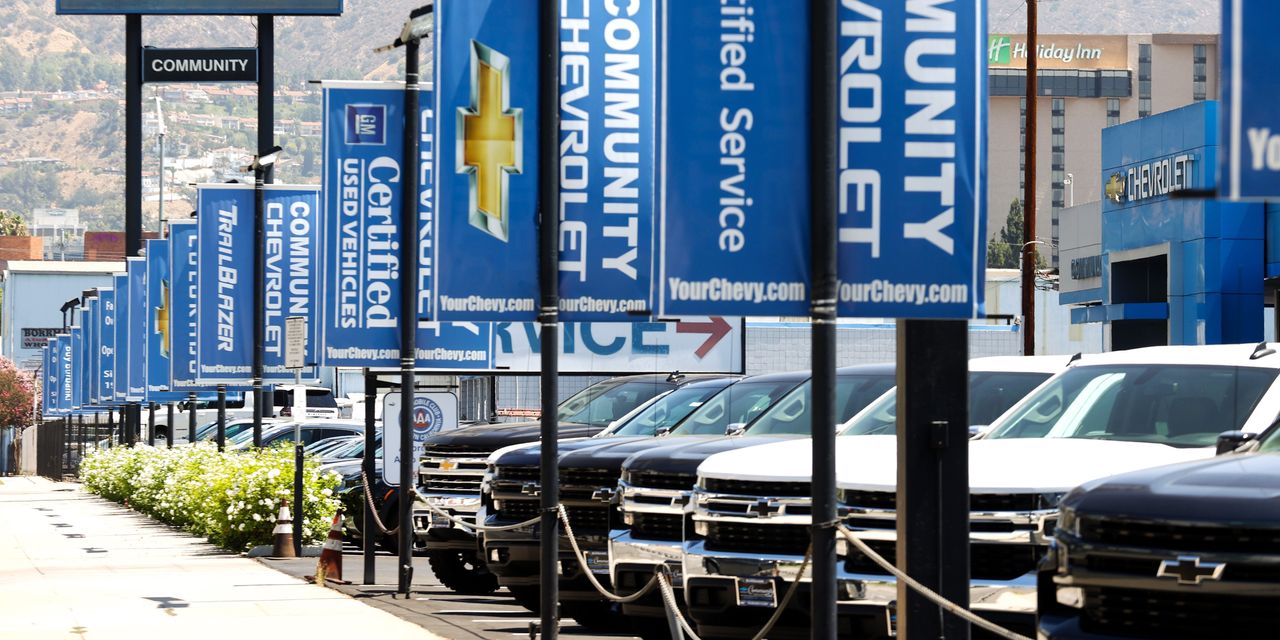
Last year was a highly unusual one for car makers: Supply mattered more than demand, reversing a pattern set by decades of overproduction. The experience is worth remembering as electric-vehicle sales take off.
General Motors GM 7.47% was outsold in its home market last year for the first time since at least the 1960s. The company said Tuesday that it delivered 2.2 million vehicles in 2021. Japanese giant Toyota TM 6.92% sold 2.3 million.
The change is less historic than it seems. Since the 1970s, Americans have gotten used to reports of U.S. car brands losing market share to cheaper and more reliable Japanese ones, but this isn’t the full story now. U.S. manufacturers have more or less held their own over the past decade as consumers have sought the light trucks and sport-utility vehicles they are best at.
Toyota’s success last year is a testament more to the superior quality of its supply chain than that of its cars. The company didn’t end up as short of microchips and other key components as either GM, which had a terrible third quarter, or Ford, which suffered in the second quarter. With demand exceeding supply across the market, Toyota sold more vehicles simply because it had more vehicles to sell.
There is an irony in Toyota’s resilience: It wrote the book on “just-in-time” supply-chain management, which was adopted by U.S. manufacturers from the late 1980s but has become a problem during the pandemic. The less-imitated flipside of Toyota’s just-in-time supplies is very close relationships with suppliers. U.S. manufacturers are now trying to catch up with “strategic partnerships” instead of traditional hierarchical supply agreements, notably for microchips.
The market is likely to normalize at some point, restoring the traditional pattern of excess production and supply—and probably GM’s market leadership. The company said Tuesday that it intended to grow sales and share this year on the back of “anticipated improved semiconductor supplies.”
But the timetable for normalization was continually pushed back last year, and could be again by the Omicron-related surge in Covid-19 cases. Also, normalization will be a mixed blessing for the industry. Tight supply has boosted vehicle prices and margins for dealers and manufacturers alike. Efforts to hang on to the benefits of the current market could lead to further surprises.
There is one all-important sector where supply-chain shortages will get worse rather than better: electric vehicles. Globally, optimistic forecasts for EV adoption are at odds with the slow ramp-up of metal supplies required for their batteries. The dynamic is likely to reward those companies with the most robust supply agreements, which explains why the largest auto makers have been investing in cell production and deals with miners. The losers here are the small EV startups, which will have to fight hard for the materials they need for their bullish business plans.
Tesla defied production constraints in a blowout fourth quarter. The EV pioneer has invested heavily in its supply chain, but it may also be getting special treatment. China has laid out a red carpet, and it is the kind of fast-growing company suppliers don’t like to turn down. Rivals may find its recent success in ramping up EV production hard to imitate, particularly when everyone is ramping at once.
Car makers used to worry about lackluster EV demand due to range anxiety and poor charging infrastructure. As interest in the technology snowballs, raw-material supplies could end up being the real problem—as well as the higher vehicle prices they inevitably lead to. The supply-related challenges that upended the U.S. auto market in 2021 could have a surprisingly long afterlife.
Write to Stephen Wilmot at [email protected]
Copyright ©2022 Dow Jones & Company, Inc. All Rights Reserved. 87990cbe856818d5eddac44c7b1cdeb8
Appeared in the January 5, 2022, print edition as ‘EVs Could Revive Detroit’s Supply Issue.’








